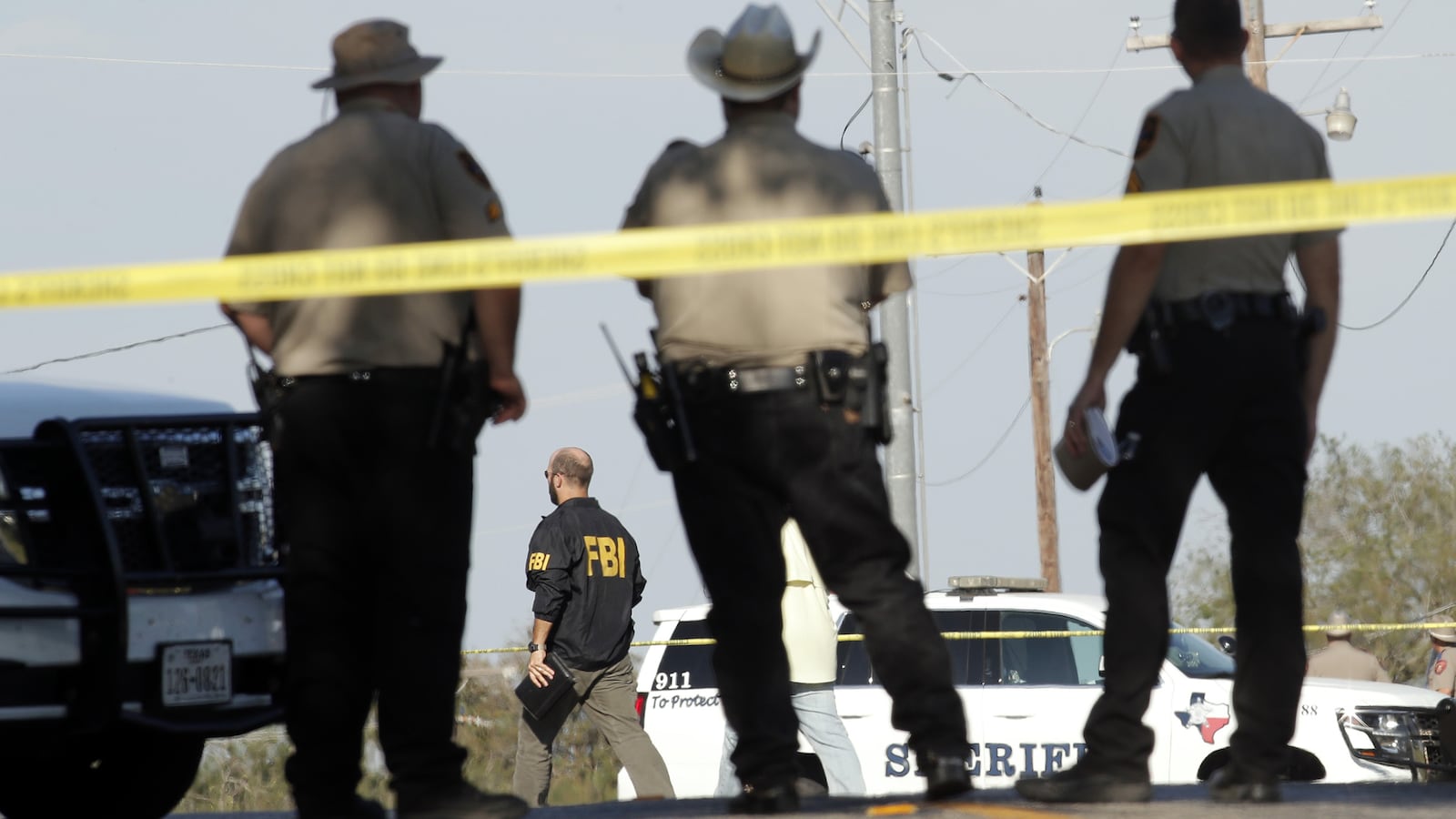SUTHERLAND SPRINGS, Texas—Manna from heaven was the Sunday school lesson John Holcombe taught his students the day that a gunman opened fire on Sutherland Springs First Baptist Church. Just 20 minutes before the deadliest mass shooting in Texas history, the young parishioners had been learning the story of God providing bread to the Israelites when they needed it the most, and the importance of unyielding faith in trying times. No one in the church realized how immediately relevant the lesson was about to become.
Sutherland Springs resident Tim Montgomery, a senior deacon at First Baptist, had skipped attending church that day; a rare occurrence for the Vietnam War veteran. Yet even serving in the Vietnam War couldn’t prepare Montgomery for the blood and bodies he found in the church.
“It looked worse than a war zone,” said Montgomery. “I’ve been in war and I’ve never seen anything like it. It was a total hit.”
Montgomery arrived on the scene roughly 15 minutes after the shooting had ended, searching for his wife Ann, who had managed to escape physically unscathed.
Kelly Eouf’s friends did not.
“One of my dearest friends Karla Holcombe and her husband were killed here today,” Eouf of nearby Stockdale said. “Not only that but their son was seriously injured and his wife was pregnant and killed. Can you explain this to me?”
Ray Koenig, who has lived here in the area all of his 82 years, said people here often carry guns and knives but no one could have imagined being attacked as they prayed.
“You can bet that I am going to rethink sneaking my gun into church now,” Koenig said.
Sutherland Springs is a blink-and-you’ll-miss-it Texas town: one main road, no dedicated traffic light, and just three small-town landmarks—the post office, the community center, the church. Thirty miles outside of San Antonio with a population just below 500 residents, the unincorporated township doesn’t even have the largest Baptist church in a 10-mile radius. What it does have is a fervent congregation of just over 100—more than a quarter of the population of Sutherland Springs.
This Sunday, however, those pews were only half full; also a rare occurrence, says Montgomery. Four families in the congregation were out of town, including Pastor Frank Pomeroy and his wife Sherri Pomeroy. Montgomery estimates around 50 congregants attended morning services—and as he does, his voice catches.
“Twenty-six people have died so far. That’s more than half.”
About 20 others were wounded.
Sutherland Springs was once a posh vacation destination for cosmopolitan Texans living in San Antonio, but a century and a half of growing urbanization has all but decimated the town’s population. The resultant community has become very insular; leery of Northerners and outsiders, says Alda Dalton, who has lived in Sutherland Springs for almost three decades. “You may not know everyone by name, but you can recognize everybody by their face,” she says.
Even a 28-year resident like Dalton can feel relatively new in a part of town where local lore stretches back as far as the Battle of the Alamo. Many families in Sutherland Springs, and its neighboring towns of Floresville and La Vernia, have been living in the area since the 1800s.
The main church building at First Baptist is the same one erected in 1926. Parents who grew up playing basketball with each other now drive their children to similar games. Sutherland kids who see each other in school and at church also spend time together at hyperlocal activities, including Scouts groups and 4-H clubs. Even non-congregants are regular participants at First Baptist activities, like the recent Halloween parade and fall festival.
To have a congregation so interwoven into the fabric of daily life will make rebuilding that much more challenging says Pastor Stephen A. Curry, who presides over First Baptist Church in nearby La Vernia. His 200-person congregation is just seven miles up the road and organizes mission trips with Sutherland Springs. He worries about how the fabric of the city will be altered if Sutherland’s First Baptist is unable to get back on their feet.
“This will be a long process, one that affects them historically for years to come,” says Curry, shortly after presiding over a candlelight vigil in the parking lot of Sutherland Springs’ post office.
Around him, vigil attendees have begun to disperse and flashes of light staccato through the darkening night as candles are blown out. But rather than leaving, everyone begins to form a large circle, attendees linking up arm in arm, hand in hand. In the center, a young woman gives her own fiery sermon to the tear-soaked crowd, imploring them to use this tragedy to come together, to rebuild their church, and to renew their faith in God.
“We are unified under Jesus’ blood, y’all,” she says, as the crowd murmurs in agreement. “It’s time to rise up in Jesus’ name.”
As heads around the circle nod in agreement and solidarity, it’s difficult not to see exactly what Holcombe was hoping to impart to his students that morning—unyielding faith, even in trying times; manna from heaven.





